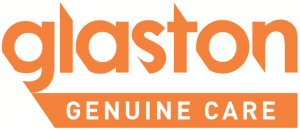Glas Dreisbusch, Germany
Reference - Europe
Glas Dreisbusch gets the first-ever U-shaped Glaston VARIO TPS® line
“The idea of a special U-shaped design to fit our confined space was created over lunch by my son Maximillian Dreisbusch and two Glaston service engineers. I think this says everything about our close and collaborative partnership with Glaston,” says Thomas Dreisbusch, Managing Director of Glas Dreisbusch.
With a history spanning nearly 100 years, Glas Dreisbusch of Goldbach, Germany, located 50 km east of Frankfurt/Main, started as furniture joinery and flat glass trading company. Over the years, it evolved from a pure handicraft glass grinding business to a medium-sized industrial company producing insulating glass. Managing Director Thomas Dreisbusch took over the helm from his father in 1995 and represents the family’s third generation. In the meantime, the fourth generation is already working in the family business with his son Maximilian, who has become very familiar with the technology in particular.
Today, Glas Dreisbusch provides the entire range of insulating glass, including double and triple insulating glass units, safety glass and ready-to-use products, such as printed glass, all-glass door systems and showers. Some of the company’s special products are blinds in insulating glass and alarm insulating glass for burglary protection.
In 1970, the company started producing insulating glass and purchased its first Lenhardt insulating glass line. In the early 2000s, it purchased a Bystronic glass line with an automatic butyl coating robot for glass production with conventional spacers. Both Lenhardt and Bystronic glass brands are now part of Glaston.
In spring 2021, the company purchased its Glaston VARIO TPS® 2735 line, which started up in December that year. “The special feature of this particular TPS® line is its U-shaped design,” Thomas Dreisbusch explains. “It’s unique in the world!”
The line features two special turning stations between the inspection station and the automatic assembly, gas filling and press robot. The turning stations move the glass from one side of the line to the other, thereby creating the line’s U-shape.
“TPS® is the most flexible insulating glass production system for us. It produces both standard and special formats on one line, eliminating the need to split orders. This gives our customers unlimited design possibilities for shapes and sizes. Also, the line differs from conventional systems in that the Thermo Plastic Spacer TPS® is applied directly to the glass plate.”
Similar references
Pilkington Automotive Finland, Finland
#automotive glass #automotiveindustry #CNC #CNC96 #lifecycleservices #mobility #reference #upgrades
“We decided to extend the lifetime of our Bystronic (now Glaston) automotive glass cutting equipment with a Glaston CNC96 upgrade kit and ensure that we can continue to get spare parts,” says Matti Säynäväjärvi, Technical Services Group Leader, Pilkington Automotive Finland Oy, Laitila plant.
Read moreViridian Glass, Australia
#architectural #automation #COMFORT #glass quality #IG unit #insulating glass #reference
As building regulations require more energy-efficient glass, Viridian Glass has stepped up its game. Purchasing Glaston’s COMFORT BOX IG manufacturing line enables its Woodville plant in Adelaide to meet burgeoning demands with visibly better quality and shorter lead times. “High quality insulated glass is the future in Australia,” says, National Operational Excellence Manager, Tarun Bhatia at Viridian Glass.
Read moreAGP, New Zealand
#architectural #automation #autopilot #digitalization #FC Series #flat glass tempering #reference
“We’re now running with the stability, reliability and consistency we aimed to achieve when we invested in Glaston’s Autopilot,” David Bunting, Managing Director of Architectural Glass Products (AGP), says.
Read moreArticles
Does turning a tempering furnace off really save energy?
Some manufacturers suggest you can save energy by heating the furnace from room temperature in just one hour at the start of each shift. Does this approach actually...
Read moreTempering energy-consumption claims – don’t fall for them
Modern tempering technologies bring glass processors significant energy efficiencies. However, some tempering line manufacturers make energy-saving claims that sound...
Read moreBreakthroughs in automating glass processing
From traditional applications to cutting-edge capabilities, automation revolutionizes production, enhances quality and boosts efficiency. In this blog, we’ll discuss...
Read more

